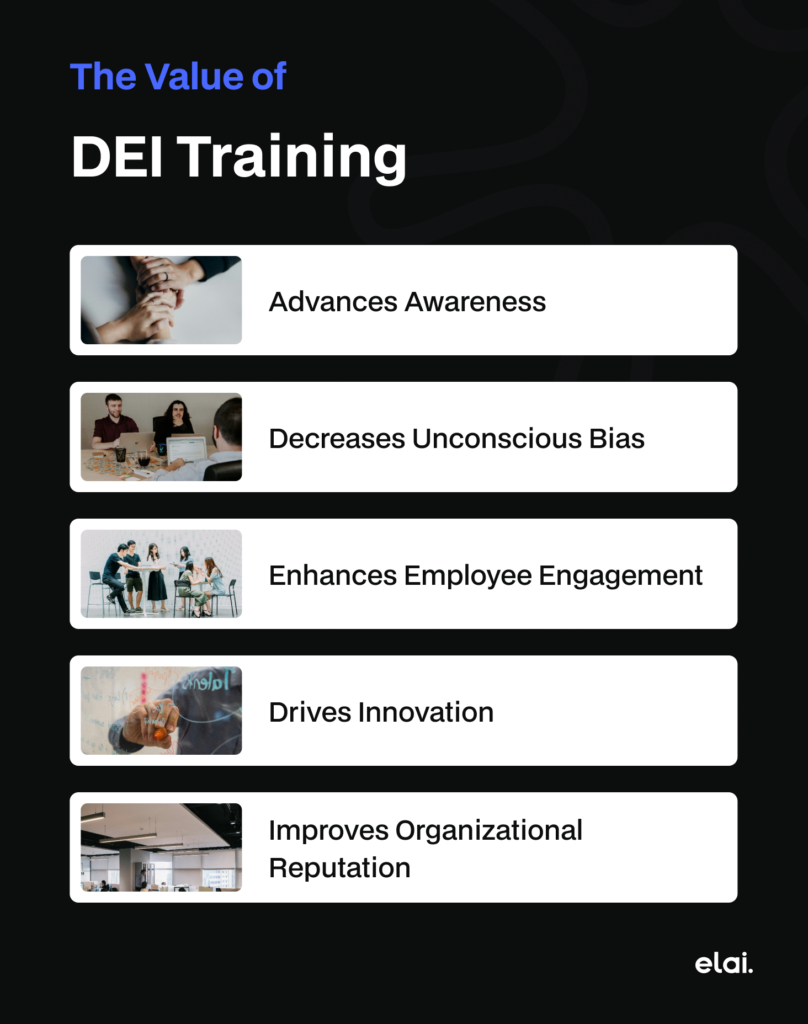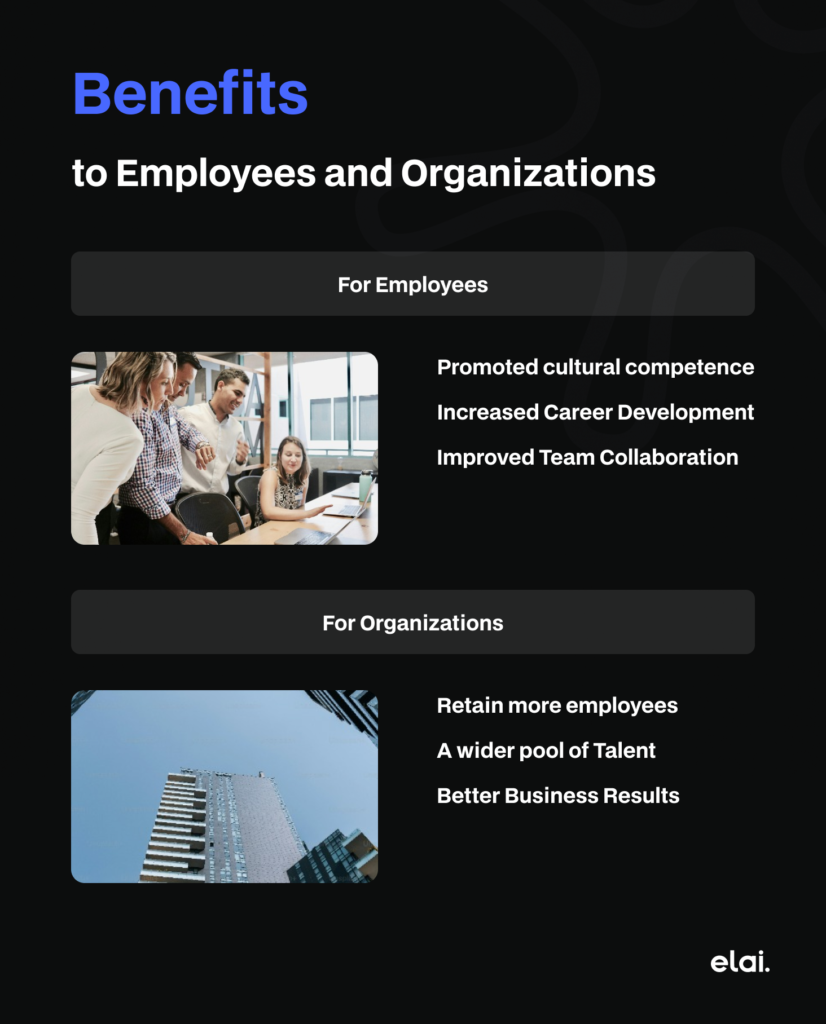Diversity, Equity, and Inclusion (DEI) training plays a crucial role in changing diverse modern work environments and is considered to be the main driving force in establishing orderly organizational strategies for company progress. DEI training is not just a tool or compliance action, but this is a must-have instrument for setting an inclusive, healthy, and fruitful workplace. This article covers the importance of implementing DEI training, and its incorporation within L&D frameworks and explores the benefits of applying DEI training to individuals and the company itself.
The Value of DEI Training
DEI training is a method that aims at teaching employees about Diversity, Equity, and Inclusion principles, and the importance of their implementation in building an inclusive and healthy working environment. This type of training is extremely necessary nowadays as it helps employees identify and challenge their preconceptions and prejudices, understand and accept various points of view, and learn skills essential for efficient partnership among different teams and departments. More broadly, DEI training:
- Build Awareness: It is crucial to teach employees the importance of diversity and inclusion and to highlight the benefits of taking others’ perspectives and experiences into consideration.
- Reduce Bias: Helps employees see and eliminate unconscious biases that can harm the decision-making process and affect communication with one another.
- Enhance Employee Engagement: This practice builds a feeling of respect and acceptance which leads to increased levels of engagement and general job satisfaction.
- Drive Creative Thinking: DEI training sets a healthy employee mindset that opens posibilities for growth, innovation, creativity, and diverse thinking and is critical for problem-solving.
- Improve Company Reputation: Teams that show their dedication to social responsibility enhance the company’s reputation among potential employees.

Integrating DEI into L&D Programs
Effective DEI training must be seamlessly integrated into the overall company’s L&D strategy. Here are key steps on how to incorporate DEI principles into L&D programs:
- Determine Needs and Set Goals: Make an in-depth analysis to comprehend the organization’s unique DEI requirements and the following challenges. Set clear, measurable goals and objectives for what the DEI training should achieve.
- Design Inclusive Content: Create relevant and engaging training materials that reflect diverse perspectives and viewpoints. It is important to use real-life scenarios and case studies to make the training relatable.
- Apply Different Training Methods: Your training should be complex to fit different learning styles so feel free to include workshops, e-learning modules, discussion forums, and role-playing exercises.
- Make Sure Leadership Involved: Engage leaders to support DEI initiatives at all levels. Their full commitment to inclusion will inspire employees and make it essential to the culture.
- Creating Continuous Learning Opportunities: DEI training should be an ongoing process. So make sure to organize regular sessions, refreshers, and advanced courses to reinforce DEI principles.
- Measuring Impact and Feedback: Employ questionnaires, tests, and feedback systems. It is also important to keep improving the training by taking all the feedback and results gathered into consideration.
Benefits to Employees and Organizations
The integration of DEI training within L&D programs offers numerous benefits:
For Employees:
- Promoted cultural competence: Employees gain a greater understanding of different cultures and backgrounds, leading to healthier relationships.
- Increased Career Development: Whether it be by uncovering and addressing systemic roadblocks to career advancement, or conversely providing everyone with an equal shot at success.
- Improved Team Collaboration: With a more open environment comes greater trust and collaboration, which in turn leads to higher team output.
For Organizations:
- Retain more employees: A diverse workplace culture makes the employees feel happy, satisfied, and a part of the community; this can lead to decreased turnover.
- A wider pool of Talent: DEI is also actively becoming a more appealing asset for job-seekers from multiple backgrounds.
- Better Business Results: Diverse and Inclusive teams are more innovative, better at problem-solving and ultimately excel in delivering business success further enhancing the competitive advantage.

Conclusion
From an L&D perspective, DEI training can be a gateway to the cultural shift that is required within workplaces and which ultimately plays a vital role in determining whether or not any organization will survive or thrive. When organizations bake DEI principles into L&D strategies, workplaces are more engaging and where employees feel respected, valued, and energized to do their best work. As businesses adapt to changing times and their increasing diversity, DEI training will be instrumental when it comes to business practice development which aims for long-term sustainable growth driven by inclusivity.

